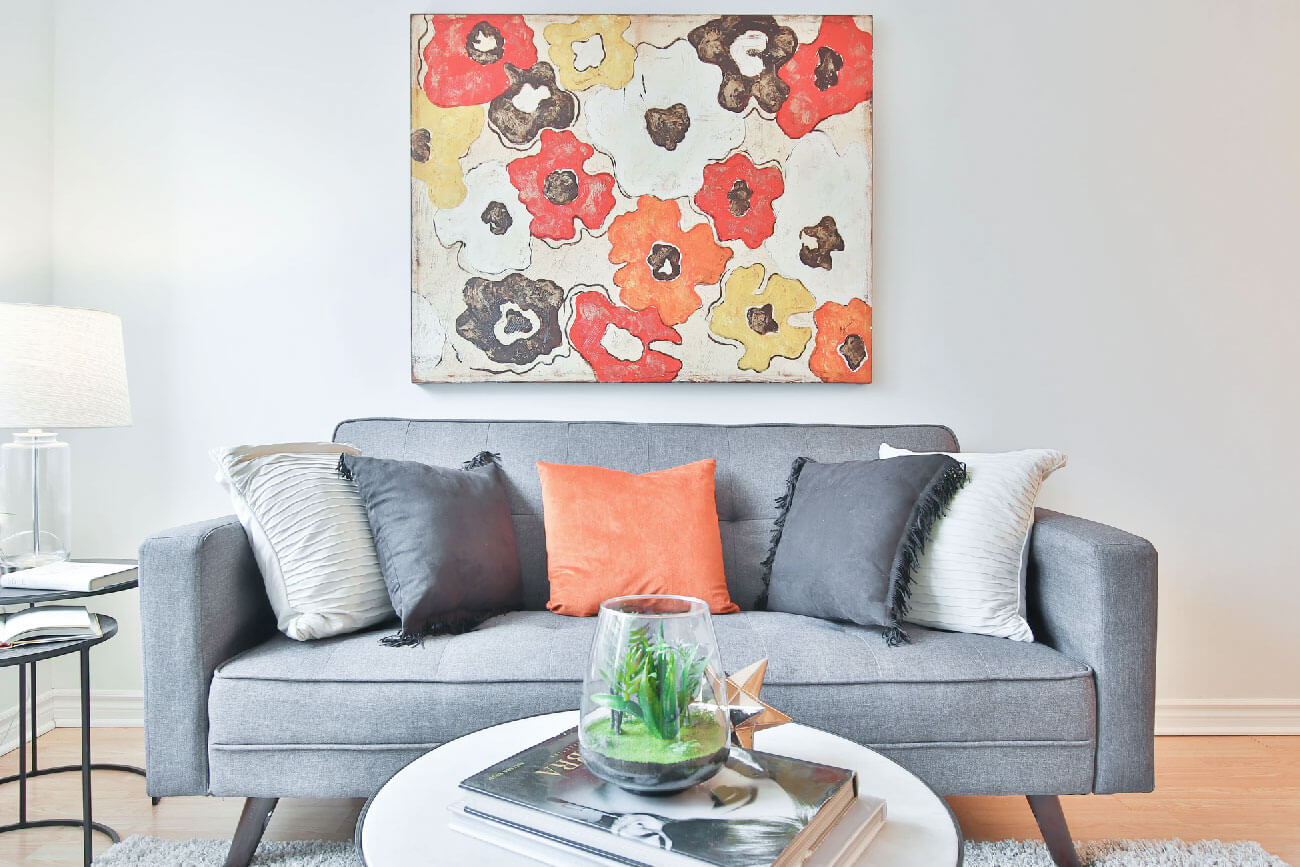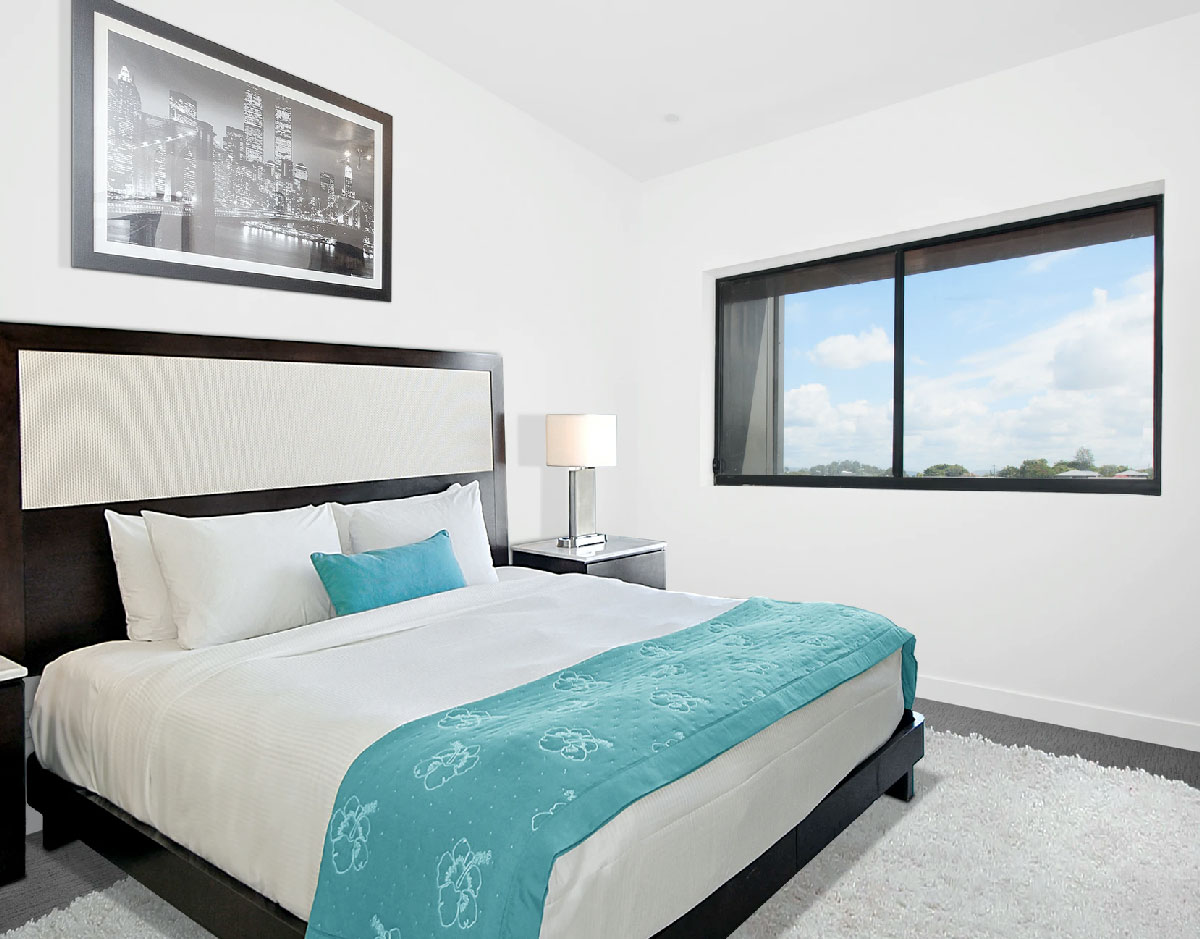You might be concerned about picking the right colors to go with your room, choosing the right size or simply having the confidence to buy something that represents you and your personality.
During a recent conversation, Billy Shaw, founder of Grafiti Home, offered me some advice on how to choose the right artwork for your home. We touched on topics such as color, size, and finding a piece that makes your space feel… well, yours.
And as it turns out, choosing artwork isn’t quite as daunting as it may seem.
Here are some of the takeaways from my conversation with Billy, and everything you need to know about choosing artwork for your home…
How to choose the perfect artwork for your home
We’ll dig a little deeper into each of these points throughout this article, but here’s a quick summary of our best tips for choosing the perfect artwork for your home:
- Choose something you like: You home is all about you. You want to create a space you enjoy, and feel comfortable in. To achieve this, the artwork you pick should speak to you. You should pick artwork for your home because you love it, not simply because it might look good in a certain space.
- Find a color that works in your space: Color can have a huge impact on how a room feels. You don’t have to match your artwork to your wall color but it’s important to think about how the color relates to your room and surroundings.
- Pick the right size: Aim for artwork that is around two-thirds the size of any furniture it sits above. If you’re unsure, it’s usually best to go bigger rather than smaller.
- Think about how you use the room: Before you buy a piece of artwork, think about how you tend to interact with the room it’ll be in. For example, in the living room you might sit or lay on the sofa a lot and in the kitchen you might stand up more often. Think about the angles that you’ll view artwork from and make sure it will look great from those positions.
Match artwork to your personality
Everyone is an individual and choosing artwork that complements your passions is a perfect way to create a space that feels uniquely yours. “Matching artwork to your personality is super important,” explains Shaw. “It’s the clearest path to finding artwork with subjects that speak to you and make your space feel like home.”
Think about your passions and look for artwork that naturally fits with the things you love in life. For example travel, landscapes, nature, flowers or cityscapes.

Shaw advises that you pick art styles (not just themes) that match your personality: “If you’re adventurous and imaginative, digital art renderings would be great for you. If you care about culture, maybe pop art is a better fit. And if you’re into realism, then photography is a good choice.”
Whatever your passions and personality, choose artwork that feels individual to you and speaks to your personality.
Find the right color and style for your room
Choosing the right color for your room
The way your artwork interacts with your wall colors, wallpapers and the surrounding furniture is important. But there’s no one-size-fits-all approach to picking the right color wall art.
Here are five ways to approach choosing artwork that’s the right color for your room:
1. Go bold
Many interior designers would argue that it’s best to go bold when picking artwork. And to have the most impact on your room, you could pick artwork that contrasts its background. This abstract green and yellow piece, for example, adds a bright spot in a white room.

2. Use complementary shades
Pick artwork that uses colors from your furnishing, but slightly different shades. The below painting features various shades of blue and cream that complement the wall colors, cushions, and sofa.

3. Create a focal point with contrast
Choose artwork that contrasts with your wall color to make it stand out and create a focal point for your room. For example, the black in the artwork below makes it really stand out in a room filled with whites and grays.

4. Experiment with toned colors
Toned colors are created by mixing any color with grey to slightly dull the color. Toned colors are subtle but eye catching and can complement almost any room.

5. Match colors with accessories
Wall color isn’t the only thing you can use to compliment your artwork. Sometimes you can make more subtle adjustments to really make your artwork pop in a room. For example, matching accessories such as lamp shades or cushions can compliment artwork nicely.

What’s the theme of your room?
Before you buy artwork, or even start to decorate a room, it's important to think about the overall theme you’re going for.
Sometimes this can evolve organically, for example my living room features a lot of browns, creams and wooden accessories. We never set out for it to be this way but as it’s evolved the room has a clear theme.
When you’re thinking about artwork, take a step back and think about the theme of the room it’ll go in. Have you subconsciously created an aesthetic for that space? Or maybe you’re intentionally going for a natural/outdoorsy feel or a beachside vibe?
Creating a theme for your room can make it a little easier to decide on the style of artwork you’d like for the space. It helps you to narrow your attention on what you’d like and also means you can have a more specific idea of what you’re looking for.
For example, if you have a room with a simple, natural theme you might choose artwork that features landscapes and light tones.

Choosing artwork by room
Living Room
The living room is most likely the centerpiece of your home: It’s where you host guests, lounge with your family, binge your favorite TV shows. “The wall art in the living room should make a statement,” says Shaw. “It should be bold, expressive — it should be you.”
The living room is a great place to showcase some larger wall art and create a prime focus in the room and be a conversation starter for your guests. When choosing a piece of artwork for the living room, you want something that will stand out.

Kitchen
The kitchen is often a focal point of the house. We tend to spend a lot of time in our kitchens and a little artwork can go a long way to make the kitchen feel like a nice space to spend time preparing meals or catching up with friends and family.
When picking pieces of the kitchen Shaw advises that small pieces can have a big impact. “Going for smaller pieces of artwork that complement the space can be a great strategy,” he says. In the kitchen you want something that feels welcoming, fits with the space or makes you smile when you prepare your morning cup of coffee.

Bedroom
The bedroom is a place to relax and refresh your mind, and your artwork should share those vibes. “In the bedroom, you’re looking for calming and relaxing artwork,” says Shaw, who suggests looking at subjects like nature, landscapes, flowers and plants for bedroom pieces. In terms of colors, you should be looking at muted tones rather than bright and in-your-face colors.

How to choose wall art size
When it comes to choosing the size of your art, it’s best to go into your search with a rough plan of where you’re looking to hang the piece and what you’re hoping it will bring to your room. For example, you probably won’t have an extra-large piece in your kitchen, just as you won’t want a small 10”x10” piece hanging solo on your living room wall.
In general wall art comes in a variety of sizes:
- Small: Anything up to around 18inches in length. Smaller pieces can look great in a gallery wall.
- Medium: Anything from around 24-28inches in length. These pieces can work as standalone artwork in smaller spaces or work as a feature element of a gallery arrangement
- Large: Ranging from 28-34inches in length, large artwork works well as a centrepiece of a wall.
- Extra Large: Around 36inches in length or greater. These also work well as a centrepiece if you’re looking to fill a large amount of space.
Pro tip: If you’re undecided between two sizes, it’s best to go bigger (as long as it will fit in your space).
Some of our favorite places to choose wall art:
The two-thirds rule
Here’s a great rule of thumb for picking artwork size, from stylist, author and TV host Emily Henderson. On her YouTube channel, Henderson recommends that your piece of art is two-thirds the size of your sofa. This also applies to creating a gallery, Henderson advises that you treat a gallery as one large piece and aim for it to take up two thirds of the space above your furniture.
In the video, Henderson mentions the two-thirds rule in relation to a sofa and headboard, but it feels like a great rule to use wherever you hand your art. It also doesn’t have to be exact, and I wouldn’t agonize over a few inches but in general aiming for your artwork to be roughly two-thirds of furniture it’s hanging above.

Should you choose a feature piece or a gallery wall?
One vs. many is a debate many people have before buying artwork. And the decision on whether to go for one centerpiece or create a gallery wall all depends on the feeling you’re trying to create in your room.
“Grouping two or three smaller pieces together in a smaller wall will give the feeling that your space is bigger and more decorated,” explains Shaw. “But if you have an empty large wall, and you want to make a big impact, going for a large piece will create a grand impression.”
Placing artwork at the right height
When thinking about size, you need to consider how your artwork will sit on your wall. In general, you want the centre of your artwork to be at eye level for most people — on average this is 57inches above the floor (also known as “gallery height”). If there is furniture in front of your artwork, you want there to be at least a 10-12 inch gap between the furniture and the bottom of your artwork.














